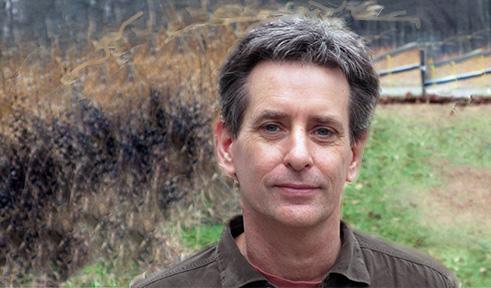James M. Dyer

Recent News
Education
Ph.D., University of Georgia, 1992
Research
- Biogeography
- Landscape ecology
- Forest dynamics
My research focuses on North American forests, especially in the eastern United States. As a biogeographer, I am interested in the patterns that emerge from the interactions of the physical environment, biotic processes, and disturbance.
Recent efforts have focused on predicting vegetation-site relationships, using a water balance approach. Such an understanding is critical for assessing the effects of future climate change or to evaluate changes related to historic land use patterns. I also have been exploring changes in forest composition and structure in southeastern Ohio since settlement. Although southeastern Ohio is heavily forested today, land use practices, climate change, and other alterations have left distinctive “imprints” on these communities. Lastly, I continue to be involved with Ohio’s hemlock forests, coincident with the arrival of the invasive Hemlock Woolly Adelgid (HWA). HWA has caused high mortality in hemlock stands in the eastern United States, and its expansion into Ohio is likely to have devastating ecological and economic effects. Hemlock is a “foundation species” that creates a unique microenvironment and provides habitat for animal species not typically associated with surrounding hardwood forests. Feel free to contact me if you are interested in learning more about, or participating in any of these research projects.
Courses Taught
- GEOG 1100: Physical Geography
- GEOG 3160/5160 (BIOS 3160/5160): Biogeography
- GEOG 4170/5170: Landscape Ecology
- GEOG 4712/5712: Field Methods
- GEOG 4800: Capstone Experience in Geography
- GEOG 6160: Seminar in Biogeography
Representative Publications
Dyer, J.M. 2019. A GIS-based water balance approach using a LiDAR-derived DEM captures fine-scale vegetation patterns. Remote Sensing 11(20): 2385. https://doi.org/10.3390/rs11202385
Dyer, J.M., and T.F. Hutchinson. 2018. Topography and soils-based mapping reveals fine-scale compositional shifts over two centuries within a central Appalachian landscape. Forest Ecology and Management, 433: 33-42. https://doi.org/10.1016/j.foreco.2018.10.052
Pederson, N., J.M. Dyer, R. McEwan, A. Hessl, C. Mock, D. Orwig, H. Rieder, and B. Cook. 2014. The legacy of episodic climatic events in shaping temperate, broadleaf forests. Ecological Monographs 84(4): 599-620.
McEwan, R.W., J.M. Dyer, and N. Pederson. 2011. Multiple interacting ecosystem drivers: toward an encompassing hypothesis of oak forest dynamics across eastern North America. Ecography 34: 244-256.
Dyer, J.M. 2010. Land use legacies in a central Appalachian forest: Differential response of trees and herbs to historic agricultural practices. Applied Vegetation Science 13: 195-206.
Dyer, J.M. 2006. Revisiting the Deciduous Forests of Eastern North America. BioScience 56: 341-352.
Selected Student Projects
Rethinking the Urban Flora: Characterizing Unintentional Vegetation Communities in Cleveland, Ohio, Dani Niziolek, Honors Tutorial College, Geography/Environmental Studies thesis, 2020.
Examining the Cover and Composition of the Successional Vegetation Mosaic of Pre-SMCRA Mined Landscapes in Southeast Ohio, Gary Conley, Geography MS 2013.
Ecological Considerations for Risk Management of the Hemlock Woolly Adelgid in the Hocking Hills, Ohio USA, Nicole Stump, M.Sc. 2008.
Using Landscape Variables to Assess Stream Health in Ohio’s Western Allegheny Plateau, Lisa King, Geography M.A. 2008.
Exotic Plant Colonization of the Forest Adjacent to Transmission Line Corridors in Athens County, Ohio, Kaabe Shaw, Environmental Studies M.S. 2002.
Land Use Land Cover Change From 1915 to 1999 in The Gwynns Falls Watershed, Baltimore County, Maryland: Creation of a Suburban Social Ecology, Michael Wehling, Geography M.A. 2001.